General Dermatology
Acne Treatments - Acrochordons - Eczema Treatment - Lentigo Treatment - Moles - Psoriasis Treatment - Rosacea Treatment -
Seborrhea - Seborrheic Keratoses Treatments - Sun Damage - Skin Cancer Screening - Warts
Lentigo Treatment
Lentigo, otherwise known as liver or age spots, are flat brown patches on the skin that have darkened in color ("pigmented") after exposure to sunlight or ultraviolet light. They are commonly seen in people over the age of 40 on areas of the skin that are frequently exposed to sunlight, such as the hands, shoulders, forearms, and face. Age spots may look unattractive, but age spots are painless and harmless, although their dark color can delay the diagnosis of some skin cancers.
Lentigo Before & After images
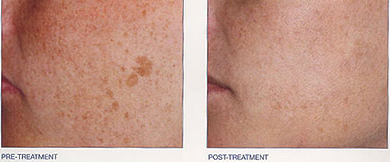
Age spot treated with Palomar LuxG™
Mole Removal
Moles, otherwise known as nevi (singular "nevus"), and other birthmarks are benign pigmented spots or patches of skin that range in size and color from tan and brown to red or pink. Though most moles and birthmarks are harmless, certain risk factors and types of moles have an increased potential of developing into skin cancers. These include multiple sunburns, family history of skin cancer, fair skinned, congenital moles, individuals with 100 or more moles, and dysplastic (or atypical) moles. Dysplastic moles occur in about one in every ten individuals, and because of this high occurrence rate; a board certified dermatologist should check moles regularly. Dysplastic moles have a higher potential to transform into melanoma than ordinary moles. Recognizing dysplastic moles is important in identifying early warning signs of melanoma, one of the most serious types of skin cancer, because of it`s ability to spread to other parts of the body. Determination of dysplastic moles can be easily remembered by the following mnemonic: the ABCDEs of dysplastic moles.
- Asymmetry: when one half of the mole does not mirror the other half
- Border: the edges of the mole are ragged, blurred or irregular
- Color: the color of the mole is not the same throughout
- Diameter: diameter is larger than 6mm (about the size of a pencil eraser)
- Evolving: changing or bleeding lesions
Moles exhibiting any of the above mentioned warning signs or skin in an area that is difficult to observe, such as the scalp should be examined by a board certified dermatologist immediately. Depending on their depth, location and color, as well as the patient's skin type, age and additional factors, treatment for dysplastic or benign moles includes biopsy or excision.
Schedule Your Consultation
Psoriasis Treatment
Psoriasis appears as raised patches of red skin and crusty areas, which are covered with silvery-white scales. The severity of the disease can vary amongst individuals, and lesions are commonly seen on the scalp, elbows, knees and lower back. Psoriasis is not contagious and is caused by an abnormality in an individual’s immune cells, thereby causing an inflammation response in the skin. Activation of Psoriasis can be caused by trauma (a cut, scratch or sunburn), certain infections or by particular medicine. Flare-ups can occur secondary to dry skin or lack of sunlight. A variety of forms exist for Psoriasis; they differ in severity, duration, location, shape and pattern of scales. Oftentimes lesions are symmetrical and can even affect the nails, causing tiny pits to form. Due to the vast array of forms, a board certified dermatologist will often obtain a skin biopsy for confirmation. A board certified dermatologist can offer advice and a variety of treatments to control the disease. Treatments include: topical medications, light therapy, UVB, PUVA and oral retinoids and immunomodulators.
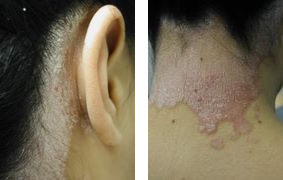
*patient with psoriasis
Read what our patients are saying!
"I got quick appointment for a rash on my elbows, Dr Ronald help with the correct medication, he was so gentle and helpful, totally recommended"
Rosacea Treatment
Rosacea is a chronic and progressive skin disease seen more commonly in adults that causes redness and dilated blood vessels primarily in the central portion of the face. Other areas affected are the neck and chest. Symptoms range from flushing, persistent redness, pimples without blackheads, and small visible blood vessels to eye irritation, burning/stinging, and dry in appearance. Although it can affect anyone, rosacea is typically seen in fair-skinned individuals after the age of 30. There is no cure or known cause for rosacea, but symptoms can be controlled with topical creams, oral antibiotics and Vbeam laser treatments.
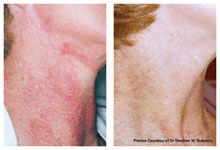
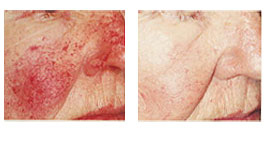
Seborrhea
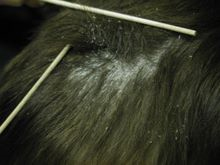 Seborrhea is a chronic skin condition of unknown origin, which is characterized with redness and/or scaling. Seborrhea is also known as Seborrheic dermatitis and dandruff. Dandruff is scaling without redness, while Seborrheic dermatitis has both redness and scaling. Seborrheic dermatitis is most often seen as a red, scaly, itchy rash commonly on the scalp, sides of nose, eyebrows, skin behind ears and eyelids. This condition is most commonly seen in three age groups: infants, middle age and elderly. There is no cure for Seborrheic dermatitis, but the symptoms can be controlled. For this reason, self-treatment methods such as moisturizing often prove ineffective and may even worsen the condition. For infants, a mild shampoo applied gently is effective, but adult patients may require medicated shampoo or corticosteroid preparation. A dermatologist may recommend treatments such as cortisone creams and lotions or topical antifungal agents to be applied to the affected areas of the skin, in combination with frequent gentle washing and avoidance of harsh or perfumed soaps to alleviate symptoms.
Seborrhea is a chronic skin condition of unknown origin, which is characterized with redness and/or scaling. Seborrhea is also known as Seborrheic dermatitis and dandruff. Dandruff is scaling without redness, while Seborrheic dermatitis has both redness and scaling. Seborrheic dermatitis is most often seen as a red, scaly, itchy rash commonly on the scalp, sides of nose, eyebrows, skin behind ears and eyelids. This condition is most commonly seen in three age groups: infants, middle age and elderly. There is no cure for Seborrheic dermatitis, but the symptoms can be controlled. For this reason, self-treatment methods such as moisturizing often prove ineffective and may even worsen the condition. For infants, a mild shampoo applied gently is effective, but adult patients may require medicated shampoo or corticosteroid preparation. A dermatologist may recommend treatments such as cortisone creams and lotions or topical antifungal agents to be applied to the affected areas of the skin, in combination with frequent gentle washing and avoidance of harsh or perfumed soaps to alleviate symptoms.



